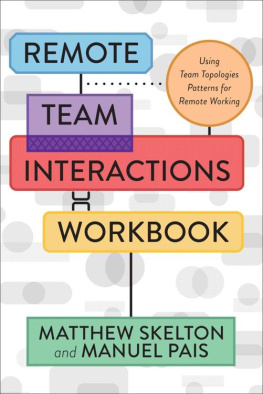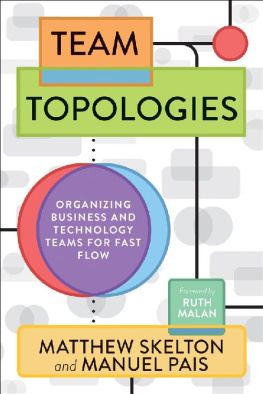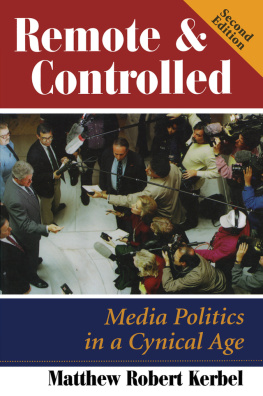Matthew Skelton - Remote Team Interactions Workbook
Here you can read online Matthew Skelton - Remote Team Interactions Workbook full text of the book (entire story) in english for free. Download pdf and epub, get meaning, cover and reviews about this ebook. year: 2022, publisher: IT Revolution Press, genre: Business. Description of the work, (preface) as well as reviews are available. Best literature library LitArk.com created for fans of good reading and offers a wide selection of genres:
Romance novel
Science fiction
Adventure
Detective
Science
History
Home and family
Prose
Art
Politics
Computer
Non-fiction
Religion
Business
Children
Humor
Choose a favorite category and find really read worthwhile books. Enjoy immersion in the world of imagination, feel the emotions of the characters or learn something new for yourself, make an fascinating discovery.
- Book:Remote Team Interactions Workbook
- Author:
- Publisher:IT Revolution Press
- Genre:
- Year:2022
- Rating:5 / 5
- Favourites:Add to favourites
- Your mark:
- 100
- 1
- 2
- 3
- 4
- 5
Remote Team Interactions Workbook: summary, description and annotation
We offer to read an annotation, description, summary or preface (depends on what the author of the book "Remote Team Interactions Workbook" wrote himself). If you haven't found the necessary information about the book — write in the comments, we will try to find it.
Remote Team Interactions Workbook — read online for free the complete book (whole text) full work
Below is the text of the book, divided by pages. System saving the place of the last page read, allows you to conveniently read the book "Remote Team Interactions Workbook" online for free, without having to search again every time where you left off. Put a bookmark, and you can go to the page where you finished reading at any time.
Font size:
Interval:
Bookmark:
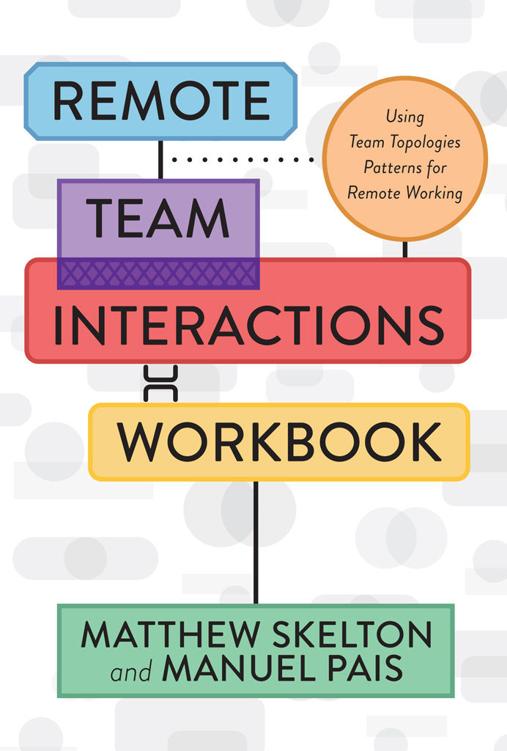
REMOTE TEAM INTERACTIONS WORKBOOK
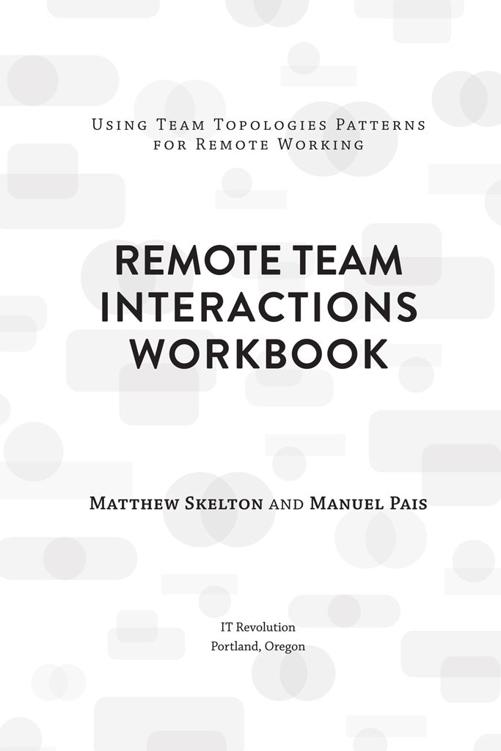

25 NW 23rd Pl, Suite 6314
Portland, OR 97210
Copyright 2022 by Matthew Skelton and Manuel Pais
For information about permission to reproduce selections from this book, write to Permissions, IT Revolution Press, LLC, 25 NW 23rd Pl, Suite 6314, Portland, OR 97210.
First Edition
Printed in the United States of America
27 26 25 24 23 22 1 2 3 4 5 6 7 8 9 10
Cover and book design by Devon Smith
ISBN: 9781950508617
eBook ISBN: 9781950508624
Web PDF ISBN: 9781950508631
For information about special discounts for bulk purchases, or for information on booking authors for an event, please visit our website at ITRevolution.com.
REMOTE TEAM INTERACTIONS WORKBOOK
Contents
Preface
Why We Wrote This Workbook
T he COVID-19 pandemic of 2020 and beyond has ushered in a new remote-first world for IT along with most other departments in the business. But many organizations have struggled to catch up with new tooling and ways of working. While some companies have embraced this new realityditching their expensive downtown offices and telling staff they can work from home permanentlymany more organizations are discovering for the first time that the physical office was covering up poorly defined teams and poorly defined areas of focus, threatening their DevOps transformation efforts and the overall health and success of their business.
A successful remote-first approach requires the explicit design of communication between teams using physical and online spaces. Using simple tools for dependency tracking and patterns from Team Topologies , such as the team API, organizations will find that well-defined team interactions are key to effective IT delivery in the remote-first world.
In this workbook, we explore several aspects of team-first remote work, including:
how the new remote-first world is highlighting existing poor team interactions within organizations
why organizations should use the team API pattern to define and communicate the focus of teams
how organizations can track and remove team-level dependencies
how and why organizations should design inter-team communications consciously
why and how organizations can use the three team interaction modes from Team Topologies (collaboration, X-as-a-Service, and facilitating) to help.
We hope these ideas and patterns will help you and your organization become more effective with a team-based, remote-first approach to building and running software systems.
Also, wed like to thank Rich Allen for his invaluable contributions to this workbook.
Matthew Skelton and Manuel Pais
August 2021
Introduction
A Brief Overview of Team Topologies
Team Topologies is the leading approach to organizing business and technology teams for fast flow, providing a practical, step-by-step, adaptive model for organizational design and team interaction. The Team Topologies ecosystem of partners, practitioners, and learning academy is transforming the approach to the digital operating model for organizations around the world.
In the Team Topologies model, four fundamental types of teams and three core team interaction modes combine with awareness of Conways Law, team cognitive load, and responsive organization evolution to define a no-nonsense, team-friendly, humanistic approach to building and running software systems.
The four fundamental types of teams are:
Stream-aligned team: aligned to a flow of work from (usually) a segment of the business domain.
Enabling team: helps a stream-aligned team to overcome obstacles. Also detects missing capabilities.
Complicated-subsystem team: where significant mathematics, calculations, and technical expertise is needed.
Platform team: a grouping of other team types that provide a compelling internal product to accelerate delivery by stream-aligned teams.
READ MORE
You can read more about the four fundamental types of teams in Team Topologies on pages 79110.
There are three ways in which teams should interact (interaction modes):
Collaboration: working together for a defined period of time to discover new things (APIs, practices, technologies, etc.).
X-as-a-Service: one team provides and one team consumes something as a service.
Facilitating: one team helps and mentors another team.
READ MORE
You can read more about the three interaction modes in Team Topologies on pages 131152.
The basic principles behind Team Topologies help organizations take a team-first approach to help unblock flow.
RESOURCE
You can also download the Team Topologies in a Nutshell and Getting Started with Team Topologies infographics at TeamTopologies.com.
How to Use this Workbook
We begin this workbook with an overview of the mindset and skills you and your organization will need to succeed in a remote-first world. The three main each feature three patterns for improving team-based work in a remote-first context. Each improvement pattern has some explanatory context along with an example and suggestions for how to try it in your organization (labeled Now Your Turn ). Each improvement pattern also refers to a section of the original Team Topologies book to provide a more detailed explanation, like this:
READ MORE
Read more about setting up team-first physical and online/virtual spaces in Team Topologies , pages 5055.
While its not necessary to read Team Topologies to take advantage of the patterns in this workbook, for the best results we recommend that you take time to contextualize the patterns of this workbook in combination with the ideas in the Team Topologies book.
Many of the patterns in this workbook also reference templates and other resources. Where possible, weve recreated the templates and resources for you in this workbook. We also provide links to these templates and resources online, so you can use them to get started. These online resources are free to use and open to contributions and suggestions for improvements. These tips will be featured like this:
RESOURCE
Use the Trust Boundaries template at GitHub.com/TeamTopologies/Trust-Boundaries-Template.
Weve also worked to show the various ideas or techniques in the workbook that are related so that it is easy for you to navigate and make connections. These relationships are shown like this:
in this workbook has more details on team APIs.
We hope these callouts help you navigate and get the most out of this workbook.
chapter 1
OverviewFocus on Remote Team Interactions
A remote-first way of working requires a new mindset from organizations. This overview chapter explores some of the techniques that can help organizations adopt an effective remote-first approach.
What Does an Organization Need in Order to Thrive in a Remote-First World?
Many organizations have found, to their dismay, that rolling out a new chat tool for staff working remotely does not magically make the organization remote-first. A viable remote-first approach needs more than just chat and video tools.
Certainly, tools are needed and useful, but for a successful digital transformationwhether colocated or remote-firstthe organization also needs good psychological safety and an effective set of ground rules and practices for teams to use for working together.
Next pageFont size:
Interval:
Bookmark:
Similar books «Remote Team Interactions Workbook»
Look at similar books to Remote Team Interactions Workbook. We have selected literature similar in name and meaning in the hope of providing readers with more options to find new, interesting, not yet read works.
Discussion, reviews of the book Remote Team Interactions Workbook and just readers' own opinions. Leave your comments, write what you think about the work, its meaning or the main characters. Specify what exactly you liked and what you didn't like, and why you think so.

